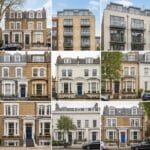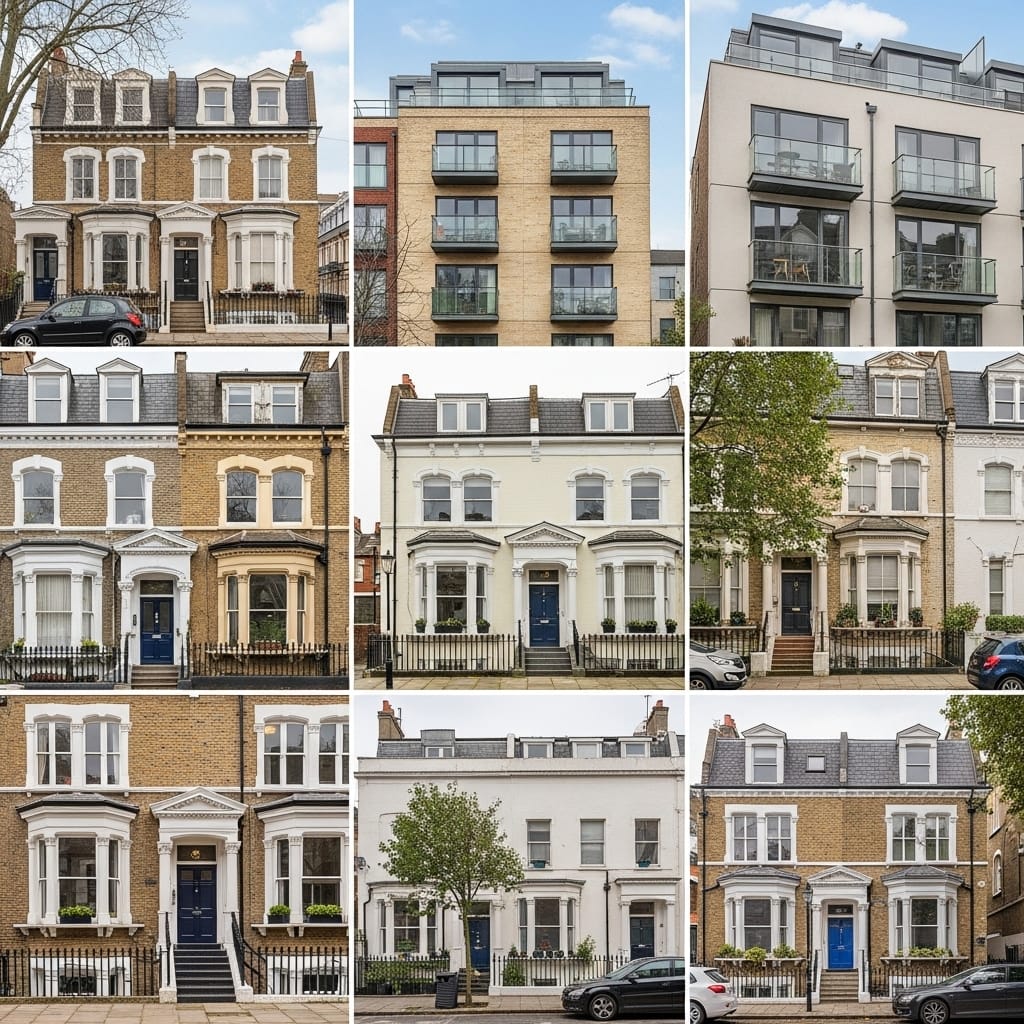
Houses for Sale in London: Your Ultimate 2025 Guide to Navigating the Capital’s Property Market
The idea of owning a home in London is a dream woven into the very fabric of British ambition. It’s a vision of bustling streets, world-class culture at your doorstep, and a unique sense of being at the centre of everything. Yet, for many, this dream feels as distant and mythical as the city’s ancient folklore. The London property market is a formidable beast, a labyrinth of soaring prices, fierce competition, and a bewildering array of boroughs, each with its own distinct character and pulse. But to dismiss the dream as impossible is to overlook the incredible opportunities that still exist within this dynamic metropolis. Finding houses for sale in London is not about having limitless funds; it’s about having the right knowledge, a strategic approach, and a dash of tenacity. This guide is your compass, designed to help you navigate the maze, understand the nuances, and ultimately, turn the key in the door of your very own London home.
Understanding the Ever-Shifting London Property Landscape
Before you even begin scrolling through property portals, it’s crucial to grasp the fundamental nature of the London market. It’s not one single entity. Instead, think of it as a collection of dozens of micro-markets, each behaving independently. What’s happening with mansion prices in Knightsbridge has little bearing on the value of a two-bedroom terrace in Walthamstow. This is London’s greatest challenge and its greatest strength for a prospective buyer. While one area might be seeing stratospheric growth, another might be quietly simmering, offering untapped potential for those willing to look beyond the obvious postcodes.
In recent years, the market has been on a rollercoaster. The race for space, fluctuating interest rates, and evolving work-from-home patterns have all left their mark. As we move through 2025, a sense of cautious optimism prevails. While the days of frantic, double-digit annual price rises have tempered, the market’s foundations remain strong, underpinned by a chronic housing shortage and enduring global appeal. Buyers are now more discerning, prioritising value, lifestyle, and transport links over pure speculation. This shift creates a more level playing field, where well-researched buyers can find their footing and make sound, long-term investments in their future.

A Tale of Many Cities: Where to Find Your London Home
Choosing where to live in London is a decision that will shape your daily life more than any other. It’s a balance of budget, commute, lifestyle, and that intangible feeling of ‘home’. Let’s explore some of the capital’s diverse residential pockets.
Prime Central London: The Epitome of Luxury
When people dream of a lavish London life, they are often picturing Prime Central London (PCL). Areas like Kensington, Chelsea, Mayfair, and Notting Hill are synonymous with eye-watering price tags and unparalleled prestige. Here, you’ll find magnificent stucco-fronted Georgian townhouses, elegant garden squares, and exclusive portered apartment blocks. These are homes that are as much a status symbol as a place to live. While largely the domain of the ultra-wealthy, understanding PCL is key to understanding the city’s aspirational peak. The properties here are stunning, the local amenities include Michelin-starred restaurants and designer boutiques, and the sense of history is palpable on every street corner.
Leafy Suburbs: The Family-Friendly Sanctuaries
For many families, the calculus of London living involves trading the frenetic energy of the centre for green spaces, outstanding schools, and a stronger sense of community. This is where the ‘villages’ of London come into their own. In South West London, areas like Richmond, Wimbledon, and Barnes offer a bucolic dream with sprawling parks, riverside walks, and a plethora of large Victorian and Edwardian family homes. North London boasts similar charms in places like Muswell Hill and Crouch End, known for their independent shops, characterful pubs, and excellent state and private schools. Dulwich and Herne Hill in the south-east provide a similar village-like atmosphere with beautiful period properties surrounding their respective parks. The trade-off is often a longer commute, but for many, the quality of life is more than worth it.
The Creative and Cool: Up-and-Coming Hotspots
If your priority is culture, creativity, and being at the heart of the zeitgeist, then East and South London are likely calling your name. East London, particularly areas like Shoreditch, Hackney, and Dalston, has transformed from a gritty industrial landscape into the city’s creative engine room. Here, you’ll find converted warehouses, trendy loft apartments, and vibrant street art. The energy is infectious, with a constant stream of new bars, galleries, and markets to explore. In South London, places like Peckham and Brixton have cultivated a fiercely independent and diverse identity. They offer a rich tapestry of culture, incredible food scenes, and a more accessible property market than their northern and western counterparts, with an abundance of Victorian terraces and conversions that are popular with young professionals and first-time buyers.
Finding Value: The Horizons of Opportunity
For a significant portion of buyers, affordability is the primary driver. The good news is that value can still be found in London if you know where to look. The expansion of the transport network, most notably the Elizabeth Line, has been a game-changer, bringing outer boroughs into closer reach of the city centre. Look towards areas in East London like Barking & Dagenham or parts of Essex like Romford, which now have phenomenally fast links to Canary Wharf and the West End. In South London, Croydon is undergoing a massive regeneration, offering modern flats and traditional 1930s semi-detached houses at prices that are a fraction of those closer in. Similarly, Walthamstow in the north-east has blossomed into a desirable area for families, retaining a strong community feel while boasting excellent transport links and its famous market.
London’s Architectural DNA: A Tour of Property Types
The history of London is written in its bricks and mortar. The type of house you buy is not just a collection of rooms; it’s a piece of the city’s story. Understanding the different architectural styles can help you find a home that truly suits your taste and lifestyle.
- The Victorian Terrace: This is arguably the most iconic London house. Built in their millions during the 19th century to house a booming population, these properties are characterised by their bay windows, high ceilings, and often-intricate brickwork. They are incredibly versatile and can be found across almost every borough, from grand multi-storey versions in Islington to more modest two-up, two-downs in Leyton.
- The Georgian Townhouse: Predating the Victorians, Georgian properties are known for their elegant symmetry, large sash windows, and understated grandeur. Typically found in areas like Marylebone, Bloomsbury, and Clifton, they often feature beautiful stucco facades and are arranged around private garden squares, offering a sense of refined, classical living.
- The Mews House: Tucked away in quiet cobbled lanes behind the grand townhouses of Kensington and Belgravia, mews houses were originally the stables and coach houses for their wealthier neighbours. Today, they are some of London’s most desirable and characterful properties, offering a unique blend of privacy, charm, and a central location.
- The 1930s Semi: As London expanded outwards, the 1930s saw a boom in semi-detached suburban housing. Found in abundance in areas like Wembley, Ealing, and Bromley, these homes are renowned for being solidly built, offering generous gardens, off-street parking, and a practical layout for family life.
- The Modern New-Build: For those who prioritise contemporary convenience, a new-build apartment or house can be the perfect choice. These properties offer the benefits of modern insulation, energy efficiency, brand-new fixtures, and often come with amenities like a concierge, gym, or communal gardens. Areas with significant regeneration, like Nine Elms or Stratford, are hubs for new-build developments.
The Buyer’s Journey: From Dream to Reality
Navigating the process of buying a house in London requires preparation and resilience. The pace can be fast and the competition fierce.
First and foremost, get your finances in order. Before you do anything else, speak to a mortgage advisor and secure a Mortgage in Principle (MIP). This certificate shows sellers and estate agents that you are a serious, credible buyer, and it gives you a clear, realistic budget to work with. In the London market, an MIP is not just advisable; it’s essential.
The property search itself is a marathon, not a sprint. View as many properties as you can in your target areas to get a feel for what your money can buy. Be prepared for open house viewings with dozens of other hopefuls. Ask critical questions: What is the lease length on a flat? Are there any major works planned? Why is the current owner moving? Look past the freshly baked bread and scented candles and try to see the property’s true potential and its flaws.
When you find ‘the one’, you need to be ready to act decisively. The London market is notorious for ‘sealed bids’ or ‘best and final offers’, where all interested parties submit their best offer by a deadline. This can be a nerve-wracking process. Your offer should be based on what you believe the property is worth and what you can afford, not just what you think will win. It’s also wise to have a good solicitor lined up in advance, as this demonstrates your preparedness to the seller and can speed up the process once an offer is accepted.
Beyond the Price Tag: Uncovering the Hidden Costs
The purchase price is just the beginning of your expenses. Failing to budget for the additional costs of buying a home can be a costly mistake.
- Stamp Duty Land Tax (SDLT): This is the largest additional cost for most buyers. It’s a tiered tax on properties over a certain value, and the rates can be substantial, especially in London. Be sure to use an online calculator to work out exactly how much you will owe.
- Legal Fees: You will need to pay a solicitor or conveyancer to handle all the legal aspects of the transaction, from conducting searches to transferring the funds. These fees can vary, so it’s worth getting a few quotes.
- Survey Costs: A property survey is vital for uncovering any potential structural problems. A basic mortgage valuation is not a survey. A RICS HomeBuyer Report or a full Structural Survey can save you thousands in the long run by identifying issues before you commit.
- Other Costs: Don’t forget to budget for mortgage arrangement fees, moving costs, initial furnishing, and potential immediate repairs or redecoration. These smaller costs can quickly add up.
Conclusion: A Dream Worth Pursuing
Buying a house in London is undoubtedly a significant undertaking. It requires more capital, more patience, and more resilience than almost anywhere else in the UK. Yet, it remains one of the most rewarding achievements imaginable. To own a piece of this vibrant, historic, and endlessly fascinating city is to invest in a lifestyle and a future. The key is to approach the journey with your eyes wide open. Do your research, be strategic in your search, prepare your finances meticulously, and don’t be afraid to look for potential where others see none. The houses are out there, from charming period cottages to sleek modern apartments. With the right strategy and a clear head, you can navigate the market’s complexities and find the perfect place to call home in the greatest city on Earth.







